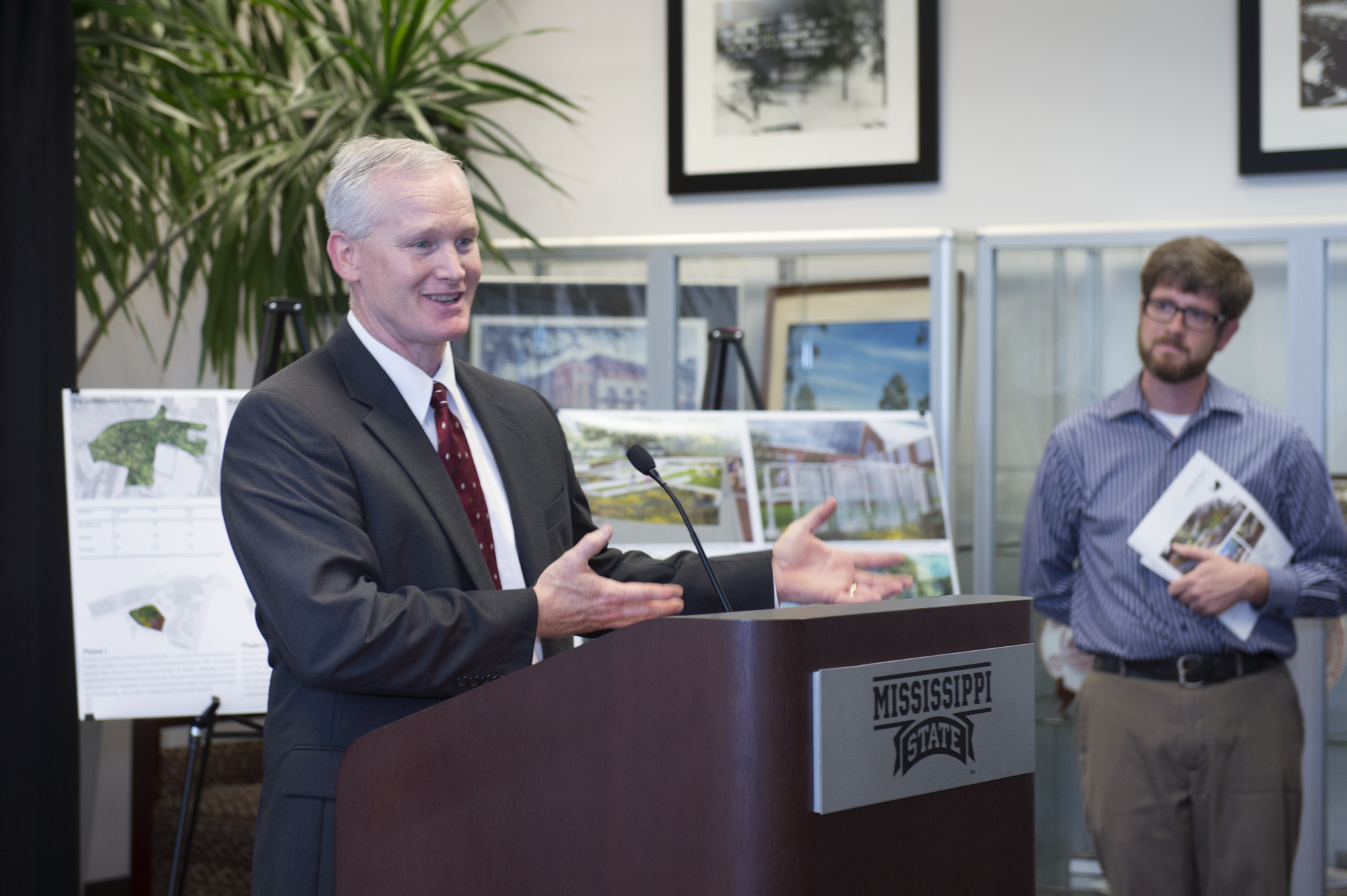Contact: Leah Barbour

Photo by: Megan Bean
Mississippi State officials plan to implement "The MSU Union Green," a student-conceived project winning second place in the Environmental Protection Agency's 2013 Campus Rainworks Challenge.
The stormwater mitigation plan impacts a space known as the Mini-Mall, between Lee Boulevard and the State Fountain bakery, Subway retail outlet, Henry F. Meyer Media Center and University Florist. To view the award-winning plan, visit www.lalc.msstate.edu/documents/MSU_Rainworks_Challenge.pdf.
When implemented, the plan will address more than 99 percent of annual rainfall runoff on more than an acre of campus and incorporate a new dining and seating area, said Cory Gallo, assistant professor of landscape architecture.
"We have a commitment at the Division of Student Affairs to not let a great idea like this go on the shelf," said Bill Kibler, MSU vice president for student affairs. "We're working hard to see to it that this takes place because this is a very beautiful place on our campus. This will be an amazing place on our campus that was created by Mississippi State students."
Two regional EPA representatives visited Mississippi State Monday [April 28] to recognize the eight-member international, interdisciplinary team.
Christopher B. Thomas, pollution control chief for EPA's Georgia-based Southeast region, congratulated the student team members. The MSU alumnus told the students he looks forward to seeing their plan come together in a fiscally responsible way. He also said the collaborative effort should serve as a model for their future professional endeavors.
"Take those concepts out into the world and make it a better place," said Thomas, who received bachelor's and master's degrees in civil engineering in 1986 and 1988, respectively.
In addition to Mississippi, the region he represents includes the states of Alabama, Florida, Georgia, Kentucky, North Carolina, South Carolina and Tennessee.
Ben Scaggs, the federal agency's Gulf of Mexico program director, also encouraged the students to share their stormwater-mitigation expertise with the world after they graduate. Like Thomas, he praised MSU faculty and leaders for emphasizing the importance of sustainability.
The student team includes residents from Mississippi, Alabama and Texas, as well as China, El Salvador and Jordan. Representing majors in landscape architecture, civil engineering and graphic design, the group worked through the fall semester to develop the plan.
Juriel A. "Jurie" Rogers, a landscape architecture graduate student from Mobile, said, "The site design will address the mitigation of storm water while simultaneously becoming a daily destination for campus activities and student life."
George Hopper, dean of the College of Agriculture and Life Sciences, expressed his congratulations to the team and emphasized how their academic collaborations reflect "partnership, participation and professionalism." He noted how members were called on to invest and continue together even as some of the project challenges became extremely difficult.
"I am so very proud of this team; they exemplify true leadership," Hopper said.
Gallo and Gnaneswar Gude, an assistant professor of civil and environmental engineering, teamed with Wayne Wilkerson, director of the MSU-based Mississippi Water Resources Research Institute, and Jeremiah Dumas, campus sustainability director. Wilkerson recently retired, and Dumas' duties were expanded to include Parking, Transit and Sustainability Operations.
"The project shows what could be done on our campus in helping recreate the natural environment and make it a place for people, as well as for water," Gallo said.
Other institutions taking top awards in the challenge included the University of Florida, and Kansas State and Michigan State universities.
Visit www.msstate.edu to learn more about MSU.